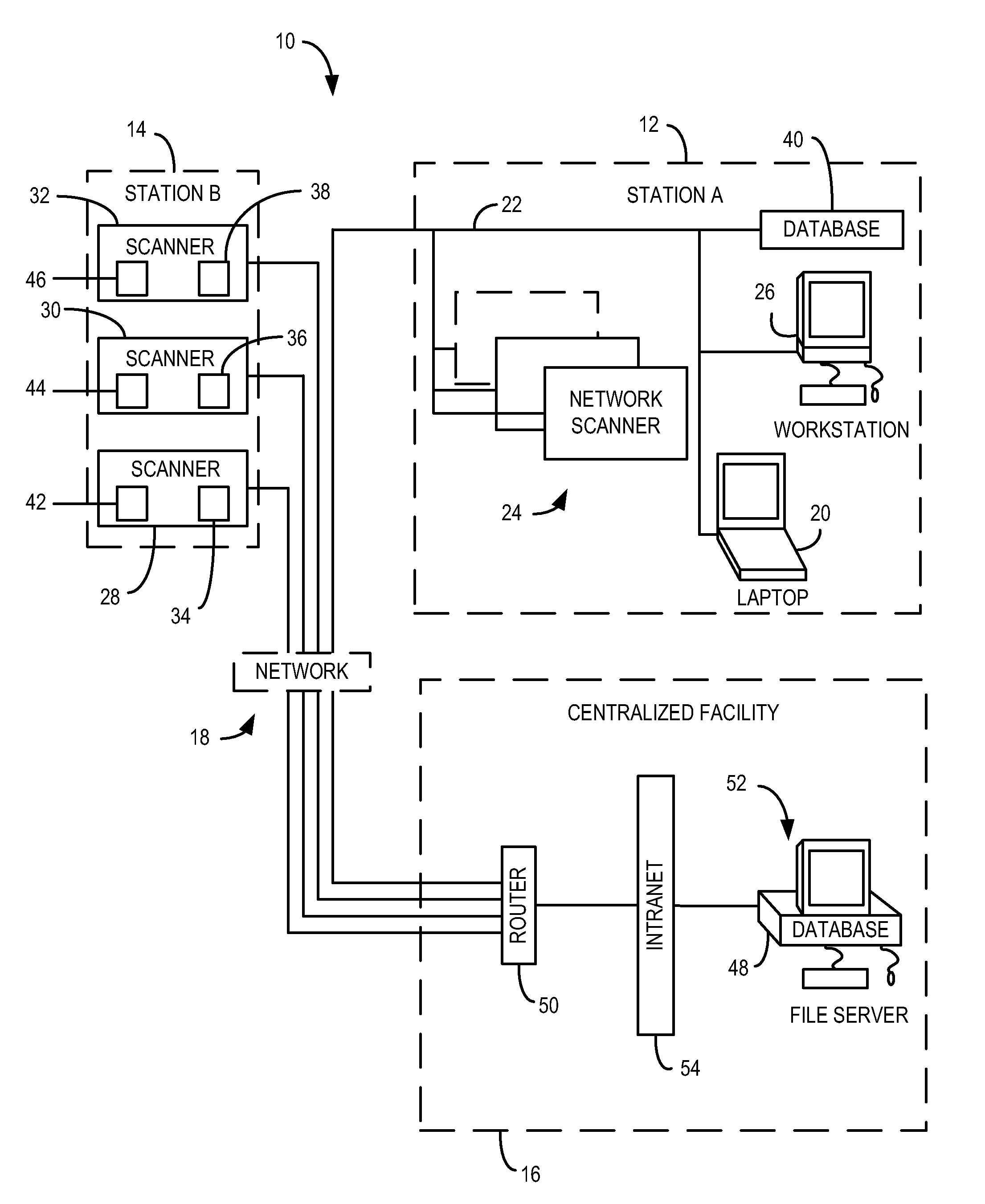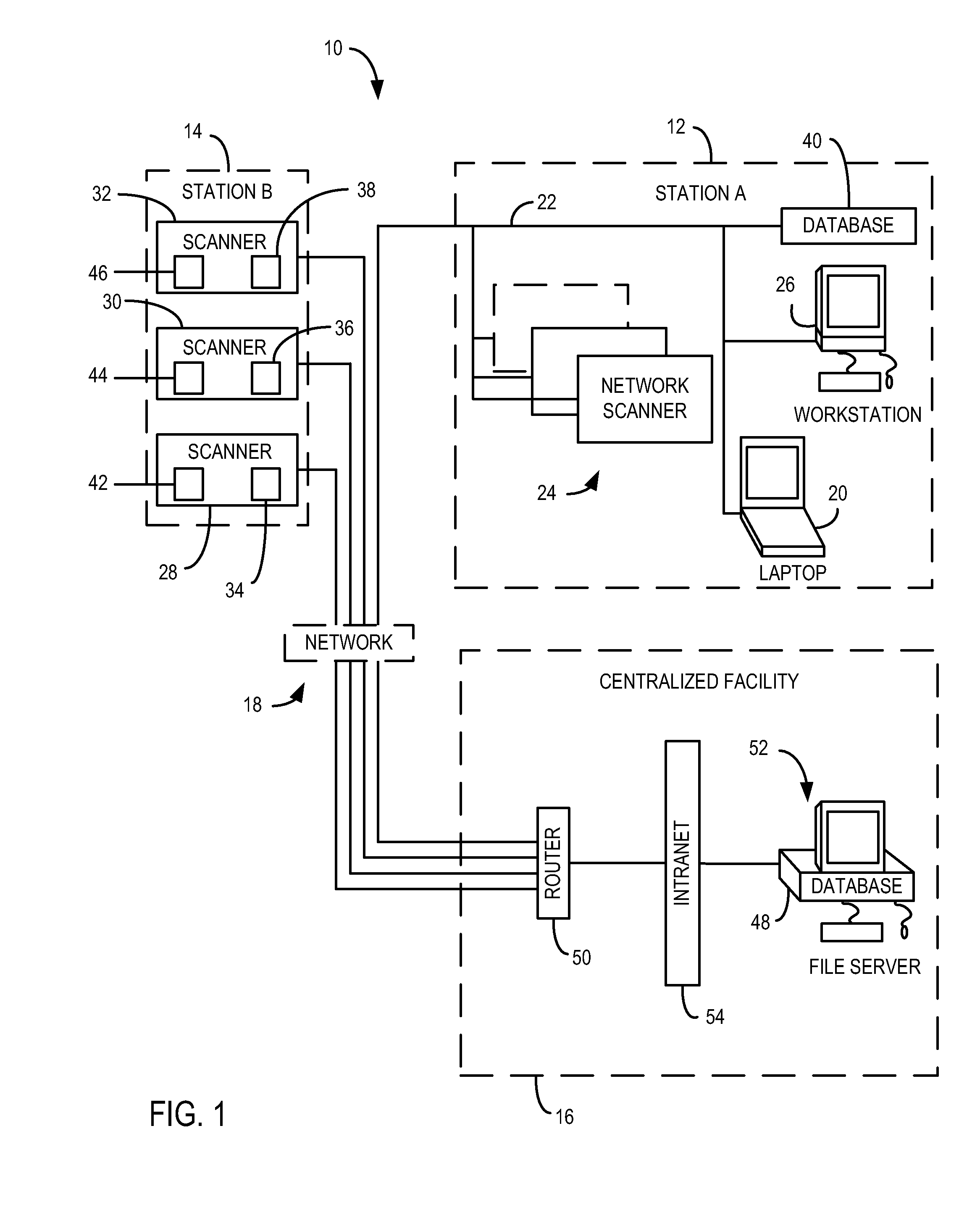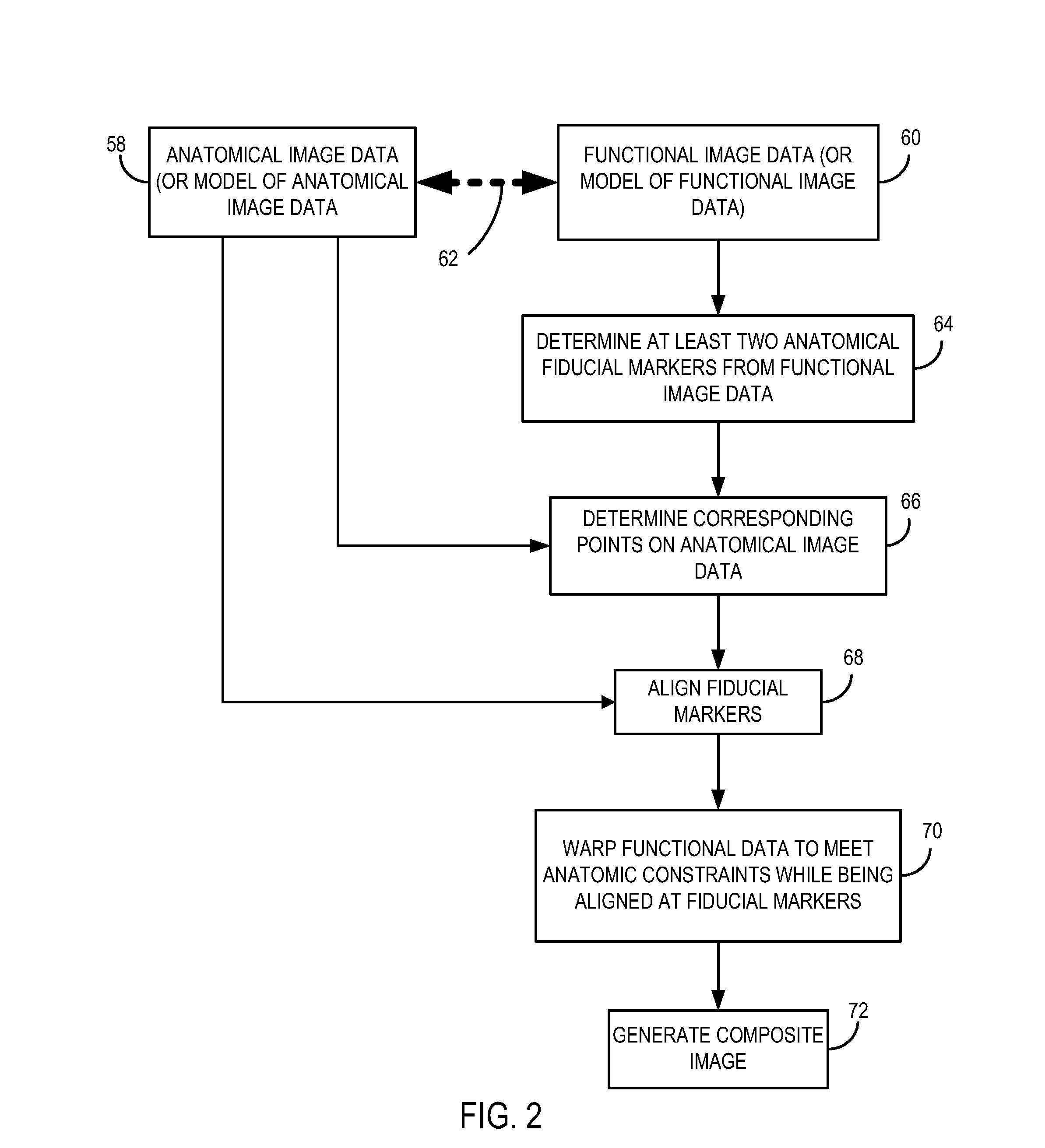Method and apparatus of multi-modality image fusion
a multi-modality, image-fusion technology, applied in the field of diagnostic imaging, can solve the problems of not being able to replace existing pet and ct systems with combined imagers, not being able to achieve the effect of a diagnostic imaging center, hospital, or the lik
- Summary
- Abstract
- Description
- Claims
- Application Information
AI Technical Summary
Benefits of technology
Problems solved by technology
Method used
Image
Examples
Embodiment Construction
[0019] The present invention will be described with respect to a process, which may be carried out through interaction with a user or automatically, to generate a composite diagnostic image of functional and anatomical data acquired separately with a PET imaging system and a CT imaging system. One skilled in the art will appreciate, however, that imaging systems of other modalities such as MR, SPECT, ultrasound, x-ray, and the like may be used to acquire the functional and anatomical data to be combined into a composite image. Further, the present invention will be described with respect to the acquisition and imaging of data from a cardiac region of a patient. However, one skilled in the art will appreciate that the present invention is equivalently applicable with data acquisition and imaging of other anatomical regions of a patient.
[0020] Referring now to FIG. 1, an overview block diagram of a medical diagnostic and service networked system 10 is shown which includes a plurality...
PUM
 Login to View More
Login to View More Abstract
Description
Claims
Application Information
 Login to View More
Login to View More - R&D
- Intellectual Property
- Life Sciences
- Materials
- Tech Scout
- Unparalleled Data Quality
- Higher Quality Content
- 60% Fewer Hallucinations
Browse by: Latest US Patents, China's latest patents, Technical Efficacy Thesaurus, Application Domain, Technology Topic, Popular Technical Reports.
© 2025 PatSnap. All rights reserved.Legal|Privacy policy|Modern Slavery Act Transparency Statement|Sitemap|About US| Contact US: help@patsnap.com



